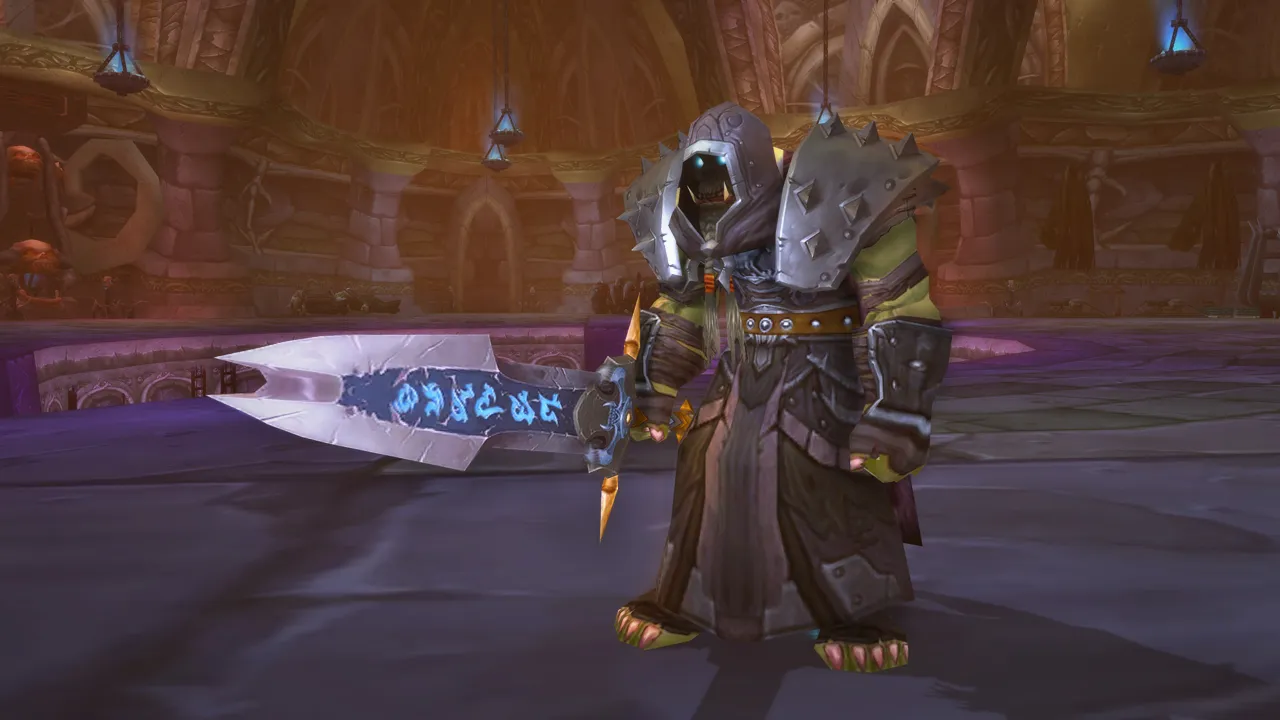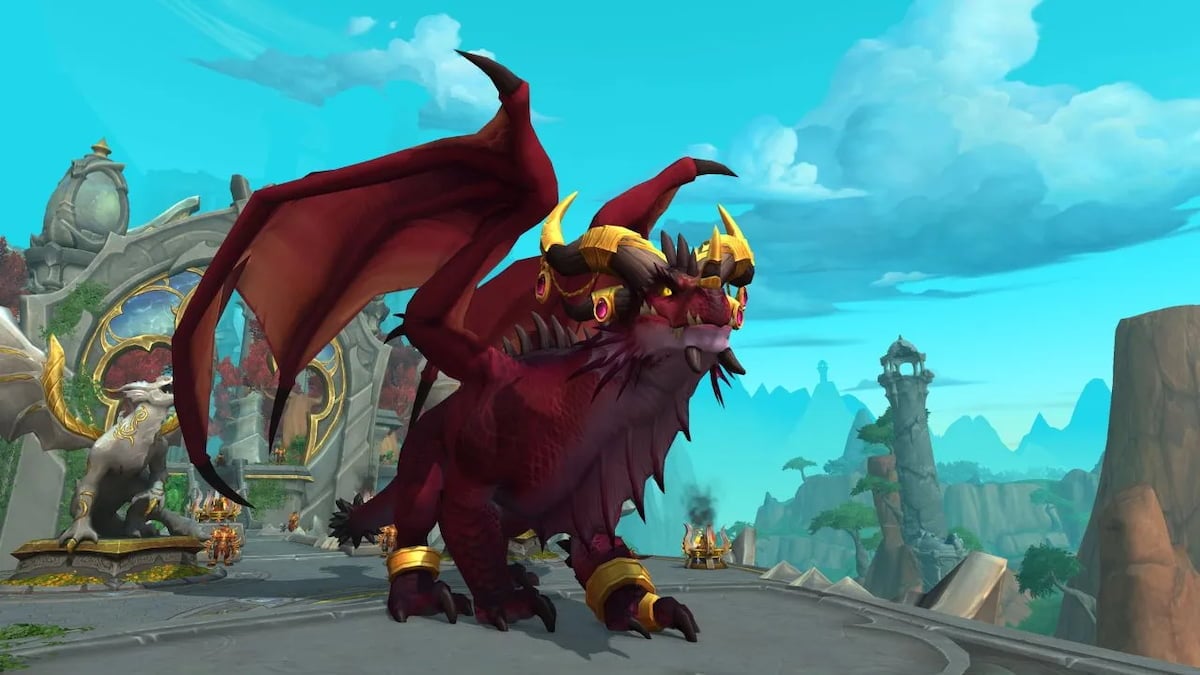Death Knight, the first hero class introduced to World of Warcraft, came out swinging when it made its debut with Wrath of the Lich King in 2008. Somewhere between a Paladin and a Warlock, the melee class offered one of the most comprehensive kits in the game from both a PvE and PvP point of view.
Fast forward 14 years and Wrath of the Lich King Classic is finally here. Although Blizzard Entertainment has made some small changes to the iconic expansion in its rerelease, including removing the dungeon finder tool for the “importance of social bonds,” pretty much everything else has remained the same.
This means Death Knight is just as powerful as it once was and can easily top the tables in raiding and dominate the ladders in the arena. But what exactly are the best builds and specializations for the class?
Related: Best Death Knight races
Anyone can pick up a Death Knight for the first time and perform well. All three specs—Blood, Frost, and Unholy—are relatively straightforward and can be learned on the go. But when you take a closer look at the class, it’s more intricate and has many more layers than you’d expect. There are multiple builds, each with their own distinct playstyle.
Best Death Knight DPS builds in Wrath of the Lich King Classic
Frost 15/56/0



This should be your go-to build for the majority of Wrath of the Lich King. When armor penetration comes into play—a stat that ignores armor and increases your non-bleed physical damage—it will naturally edge toward the Unholy tree. But sticking to this build is your best bet until Icecrown Citadel releases somewhere near the end of the expansion.
This build prioritizes Frost Strike over Obliterate thanks to 15 extra points in the Blood tree and a slight variance in the Frost tree. Those 15 points go toward five attack power for every 180 armor you have, an additional five percent critical strike on your weapons, spells, and abilities, faster runic power regeneration while in combat, and a nine percent critical strike increase on your Obliterate.
The aim of this build is to essentially use Killing Machine procs whenever they’re available, enabling you to dish out guaranteed crits on your Frost Strikes and stack up your damage output.
In the early stages of the expansion—from Naxxramas to Ulduar and Trial of the Crusader—that extra crit makes a big difference. There are many fights that require switching targets in these raids, catering to this build.
As for the Frost tree, this build includes the usual suspects: Howling Blast, Frost Strike, Unbreakable Armor, Killing Machine, Rime, Icy Talons, etc. But because the build has more of a focus on Frost Strike, it also has some extra points in Black Ice and Chill of the Grave. These talents increase your Frost and Shadow damage by 10 percent and generate five additional runic power every time you use Chains of Ice, Howling Blast, Icy Touch, and Obliterate.
Frost 1/52/18



This is the ultimate end-game, end-expansion build. When you’ve entered Icecrown Citadel and started to pick up your best-in-slot gear, this build will come into play. To make the most out of it, you’ll need at least 1,100 armor penetration (it’s a lot). To reach this colossal number, you’ll need the right gear, gems, and food. That means sacrificing plate armor for leather in some instances, leveling Jewelcrafting, and investing in Cooking.
The extra damage you gain from this build will have a significant impact if you meet the requirements. If you can’t meet that armor penetration minimum, stick to the Blood subspec for now.
This build is all about timing, setting up your diseases, and fitting in as many Obliterates as possible without messing up your runes. You should aim to use your Blood runes one after the other so they sync up with their Death rune counterparts. This way, you won’t have to wait for a rune to come off cooldown as you frantically spam your Obliterate hotkey.
To achieve this, use Pestilence after Blood Strike or vice versa. Even if you don’t need to spread your diseases with Pestilence, syncing up the runes should be your priority. In your opener, use Blood Tap (and whenever it comes off cooldown) as an alternative to Blood Strike.
On top of the standard talents from the Frost tree, this build forks off into Unholy. A total of 18 points go toward Blood-Caked Blade, Necrosis, Ravenous Dead, Epidemic, and Vicious Strikes. These talents increase your strength, shadow damage, hit rate, and disease duration.
Unholy 0/19/52



Despite Wrath of the Lich King being out for years, this Unholy build was only recently discovered. Catering to Patch 3.3.5 (which Wrath of the Lich King Classic and popular private server Warmane are run on), this build abandons Scourge Strike (in the initial phases) and replaces two-handed weapons with dual one-handed weapons. This makes for a DPS increase and a more fluid and fun play style.
Theorized by Whitewolf, this build can surprisingly dish out consistent single-target, burst, and area-of-effect damage. The main difference between this build and a traditional Unholy build is the additions of Nerves of Cold Steel from the Frost tree and Morbidity, Dirge, and Ghoul Frenzy from the Unholy tree.
This build also leaves out Scourge Strike, Outbreak, Epidemic, and Corpse Explosion, and can optionally take two points out of Vicious Strikes and put them elsewhere.
The basis of this build is to keep your diseases up on your target, use Death and Decay on cooldown (even in single-target situations), maintain Desolation (by using Blood Strike), spend runic power on Death Coil, and make the most out of Ghoul Frenzy. Optimizing your Gargoyle usage is also crucial.
To get a better understanding of Dual Wield Unholy, check out either Whitewolf’s or Sarthe’s guide. They take a deep dive into the build and break down absolutely everything you need to know, including the rotation, talents, best-in-slot gear, and more.
Best Death Knight tanking builds in Wrath of the Lich King Classic
Blood 43/23/5



The standard tanking build for Death Knight takes advantage of talents from the Blood, Frost, and Unholy trees.
This is a single-target main tank build that thrives throughout Wrath of the Lich King. There are alternative tank builds, including a more AoE-orientated, off-tank spec, and variations of Frost and Unholy tank, but this Blood build should come out on top in most circumstances.
Focusing on mitigating damage, it makes the most out of talents like Will of the Necropolis from the Blood tree, Frigid Dreadplate from the Frost tree, and Anticipation from the Unholy tree.
It also features a number of talents that act as “oh shit buttons” and safeguard you from death. This includes Rune Tap, Improved Rune Tap, and Vampiric Blood.
This build doesn’t extend as far as Blood Gorged and Dancing Rune Weapon in the Blood tree because it’s purely for mitigating damage instead of dealing it. But it does feature Unholy Frenzy, which buffs up a friendly target and increases their physical damage by 20 percent for 30 seconds. When combined with a Rogue or a Frost or Unholy Death Knight, this talent can make a real difference when it comes to dishing out damage.
As for rotations and cooldowns, this build is straightforward. Infect your target with your diseases, use Pestilence to spread them, spend your runic power with Rune Strike, and use Death Strike to give your healers a helping hand. Of course, weave in Blood Strike when you have the opportunity and use your Death Grip and Dark Command when necessary. Vampiric Blood, Rune Tap, Death Pact, Icebound Fortitude, and Anti-Magic Shell are the defensive cooldowns you have at your disposal.
Best Death Knight leveling builds in Wrath of the Lich King Classic
Unholy 19/0/52



Pretty much any spec is viable when leveling a Death Knight—but one stands out above the rest.
Unholy is the ultimate AoE spec, making the most out of diseases and spells like Death and Decay and Corpse Explosion. This combination of abilities makes handling multiple mobs a much easier task than if you were to play Blood or Frost. Unholy is also versatile and the tree includes a number of talents that help to speed up the long and arduous leveling process.
This variant of Unholy avoids some of the usual talents you might find in an end-game build like Outbreak, Blood-Caked Blade, and Scourge Strike, and instead veers off into Corpse Explosion, On a Pale Horse, and Ghoul Frenzy. In the later levels—in the final sprint—it also takes Bladed Armor, Rune Tap, and Vendetta from the Blood tree.
The aim of this build is to pull multiple mobs, use your diseases on your primary target, spread them with Pestilence, and then rain hell with Death and Decay. You should also use your Corpse Explosion when it’s available, fill in the gaps with Death Coil, and use Death Strike when you’re low on health.
Your pet is another crucial component to this build, especially since it includes Ravenous Dead, Night of the Dead, Master of Ghouls, and Ghoul Frenzy. Your pet can deal a significant amount of damage and should be used accordingly. Macroing your core abilities to include /petattack and /claw is recommended.
This article will be updated throughout the expansion with more Death Knight builds.













Published: Oct 19, 2022 03:00 am